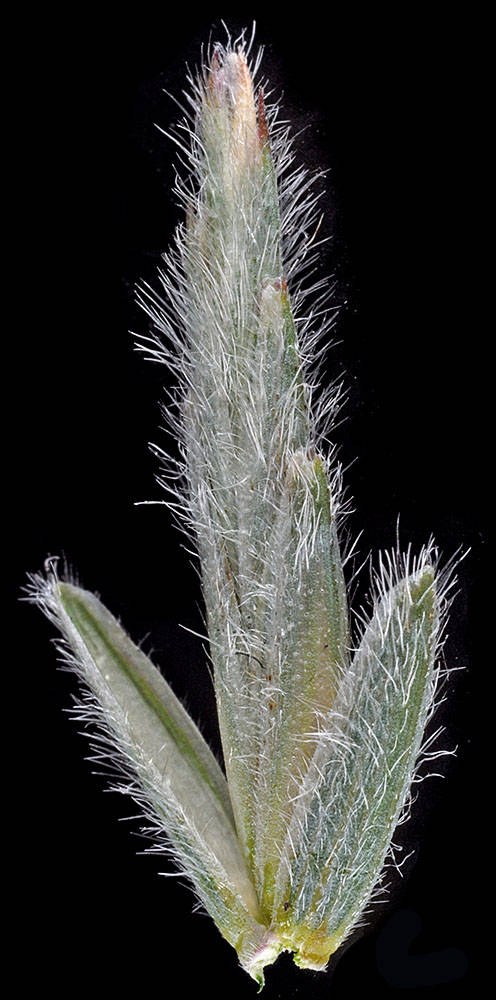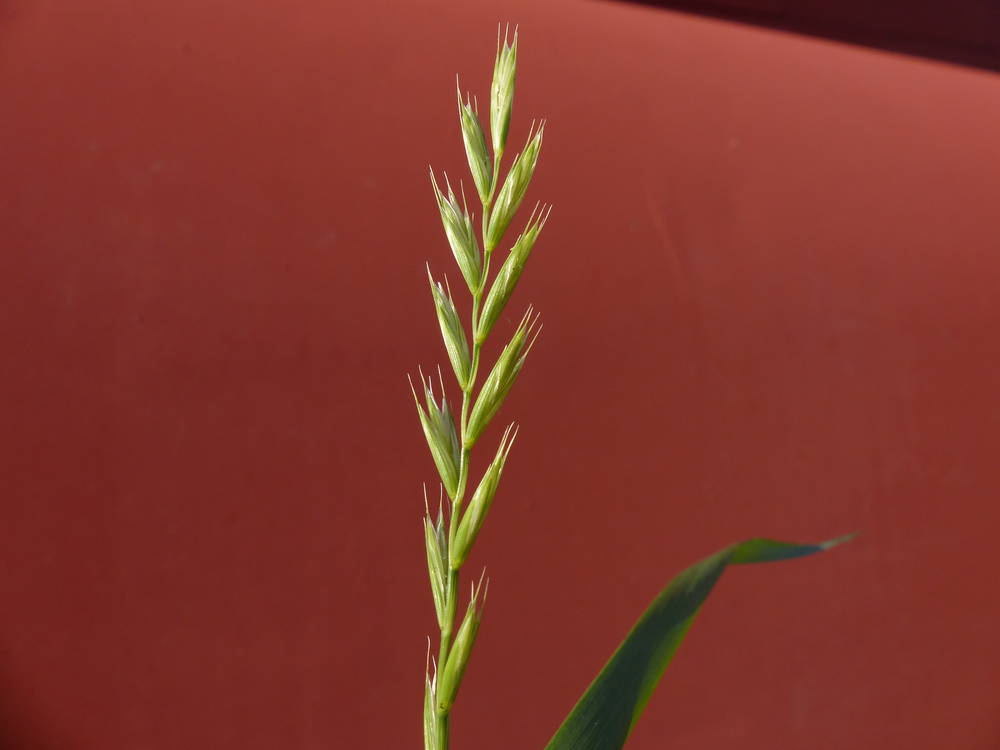Elymus lanceolatus
Elymus repens
thickspike wheatgrass
quackgrass
erect.
erect to geniculate.
sheaths glabrous or pubescent;
blades 1.5–6 mm wide;
outer surfaces usually glabrous;
inner surfaces with appressed hairs.
sheaths with spreading hairs or glabrous proximally;
blades 6–10 mm wide, usually flat;
lower surfaces glabrous or sparsely pilose;
upper surfaces usually with sparse spreading hairs over the veins but sometimes glabrous.
3.5–26 cm; erect to slightly nodding, 1 spikelet per node but occasionally with 2 at a few nodes;
internodes 3.5–15 mm;
disarticulation above the glumes; beneath each floret.
5–15 cm, 1 spikelet per node but occasionally with 2 at a few nodes;
internodes 4–6(9.5)mm;
disarticulation above the glumes; beneath each floret.
8–31 mm, 1.5–3 times longer than the internodes, appressed, 3–11 florets, glabrous or hairy;
hairs to 1 mm.
10–27 mm, appressed to ascending, 4–7 florets.
5–14 mm, 50–75% the length of the adjacent lemmas, 0.7–1.3 mm wide, lanceolate, glabrous or hairy; smooth or scabrous, 3–5-veined; flat or weakly keeled;
keels straight;
margins narrow, tapering from the base or from beyond mid-length;
tips acute to acuminate, sometimes mucronate or short-awned.
oblong, glabrous; the midveins scabrous and keeled near the tip but smooth and relatively flat near the base; hyaline margins present in the distal half;
tips acute to acuminate; awnless or awned; to 3 mm;
lower glumes 8.8–11.4 mm, 3–6-veined;
upper glumes 7–12 mm, 5–7-veined.
7–12 mm, glabrous to densely long-hairy; all hairs similar, sometimes scabrous;
tips acute to awned;
lemma awns; if present; to 2 mm; straight.
8–12 mm, glabrous, mostly smooth but sometimes minutely scabrous distally; awnless or awned;
lemma awns 0–4(10)mm; straight.
2.5–6 mm.
4–7 mm.
=22, 42.
Elymus lanceolatus
Elymus repens
3 subspecies.
Elymus lanceolatus is a strongly rhizomatous wheatgrass that lacks or nearly lacks awns. It is most similar to Pascopyrum smithii, which has more basally concentrated leaves and glumes that taper from near the base and have curved midveins. It is also similar to E. trachycaulus, which is cespitose, has consistently glabrous lemmas, and has glumes 75–100% as long as the lemmas.
Disturbed areas, roadsides, ditches, streamsides. 0–2400m. Throughout Oregon. CA, ID, NV, WA; throughout most of North America; cool temperate regions worldwide. Exotic.
Elymus repens is a strongly rhizomatous, nearly awnless wheatgrass most easily identified by its broad, flat leaves. Occasional individuals of E. lanceolatus and E. trachycaulus have leaf widths overlapping those of E. repens, but (ideally) an examination of the whole stand should reveal the difference. In addition, E. trachycaulus is cespitose. The midvein of the glume in E. repens is scabrous and keeled near the tip but smooth and not truly keeled near the base. In dried specimens, the keel may be observed as a tendency of the midvein to fold over to one side. In our similar native wheatgrasses, the midvein is keeled or not and scabrous or not throughout its length.
Barbara Wilson, Richard Brainerd, Nick Otting
Barbara Wilson, Richard Brainerd, Nick Otting
- Local floras:
BC,
OR,
WA
- Local Web sites:
Flora NW,
PNW Herbaria
WildflowerSearch
iNaturalist (observations)
USDA Plants Database
- LBJ Wildflower Center
- SEINet
- Plants of the World Online
- Encyclopedia of Life
- Wikipedia
- Google Image Search
- Local floras:
BC,
CA,
OR,
WA
- Local Web sites:
CalFlora,
CalPhotos,
Flora NW,
PNW Herbaria
WildflowerSearch
iNaturalist (observations)
USDA Plants Database
- LBJ Wildflower Center
- SEINet
- Plants of the World Online
- Encyclopedia of Life
- Wikipedia
- Google Image Search





